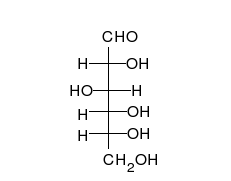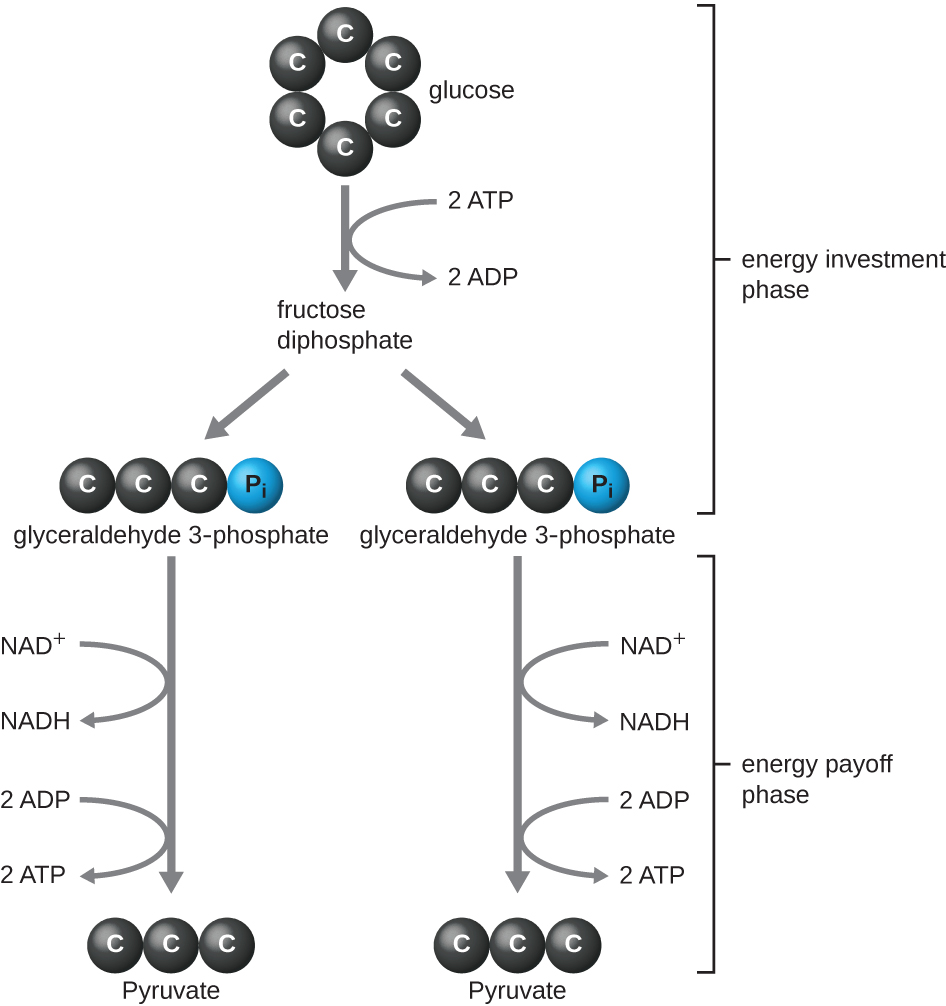Table of Contents
Glucose
Glucose is the preferred carbohydrate of cells. In solution, it can change from a linear chain to a ring.
Energy is stored in the bonds of the carbohydrates. Breaking these bonds releases that energy. Crushing sugar crystals creates tiny electrical fields that give off invisible ultraviolet light. The wintergreen chemical (methyl salicylate) gets excited by these excited electrons and fluoresces in a visible blue wavelength. This phenomenon is called triboluminescence.
Glycolysis reaction
Glycolysis (glyco – sugar; lysis – splitting) is a universal process of all cells that occurs in the cytosol whereby the glucose (a 6-carbon sugar) is split into two pyruvate (a 3-carbon molecule) molecules to generate ATP and reduced NADH.
Glycolysis is the splitting of 1 glucose into 2 pyruvate molecules to generate 2 NADH and 2 ATP molecules.
ATP and NADH/NAD+ redox pair
ATP (adenosine triphosphate) is the energy currency of the cell that stores chemical energy in 3 high energy phosphate bonds.
In the glycolysis energy investment phase, 2 ATP molecules are used, but in the energy payoff phase, 4 ATP molecules are formed.
NADH is the reduced form of NAD+. The High energy electrons associated with the reduced form come with a H atom.
NADH (reduced nicotinamide adenine dinucleotide) is a high energy electron carrier that acts as a coenzyme in reactions and as a rechargeable battery of sorts. The uncharged state that is not carrying high energy electrons is called NAD+.
In the glycolysis energy payoff phase, 2 molecules of NADH are formed. NAD is reduced and glyceraldehyde-3-phosphate is oxidized.





